Love them or hate them, snakes are a vital part of our ecosystem. In the Natural State, snakes are an important part of pest control around farms and homes, and they serve as a food source for large predators, especially birds of prey. Understanding the snakes you may encounter can help you have a better idea of how to handle them and what purpose they serve in your local ecosystem.

Top 10 Snakes Found in Arkansas
1. Copperhead
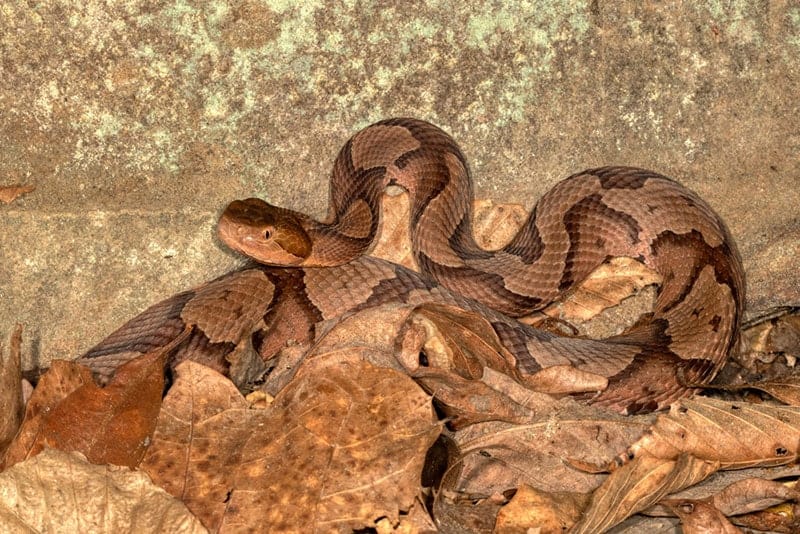
| Species: | A. contortrix |
| Longevity: | 18 years |
| Good to own as a pet?: | No |
| Legal to own?: | With permit |
| Adult size: | 2–3 feet |
| Diet: | Carnivorous |
One of the most commonly encountered venomous snakes in Arkansas, the Copperhead is a type of pit viper that uses venom to subdue prey, which it then consumes whole. Although their diet consists of small mammals and reptiles, like birds and lizards, and large insects, like cicadas, Copperhead venom is very dangerous to people. A single bite can lead to significant pain and swelling at the site, as well as altered vision, increased heartrate, and difficulty breathing, which can lead to death.
These snakes are protected by Arkansas law, so it is illegal to kill them unless they pose an immediate and direct threat. They are legal to own with a special permit that allows for ownership of venomous and dangerous snakes. Copperheads camouflage easily in leaves and will avoid humans, although juveniles routinely cross paths with humans.
2. Cottonmouth
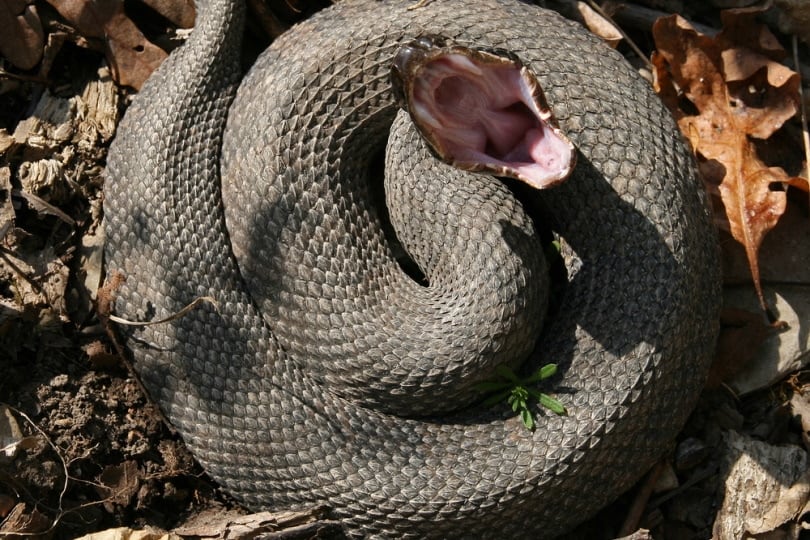
| Species: | A. piscivorus |
| Longevity: | 10–20 years |
| Good to own as a pet?: | No |
| Legal to own?: | With permit |
| Adult size: | 2–4 feet |
| Diet: | Carnivorous |
Another commonly encountered venomous snake, Cottonmouths are also a water snake in Arkansas. They also go by the name “Water Moccasin”. They are pit vipers like Copperheads, but they have more potent venom and a more powerful bite, making them more dangerous to humans. However, their bites are not typically deadly in adults.
They are carnivorous snakes that consume all manner of aquatic life, including frogs, fish, and other snakes. These snakes are dark-colored, which allows them to blend into the water’s surface effectively. It’s obvious that Cottonmouths are powerful swimmers, but they are also adept at climbing trees, although they rarely do so.
3. Eastern Hognose
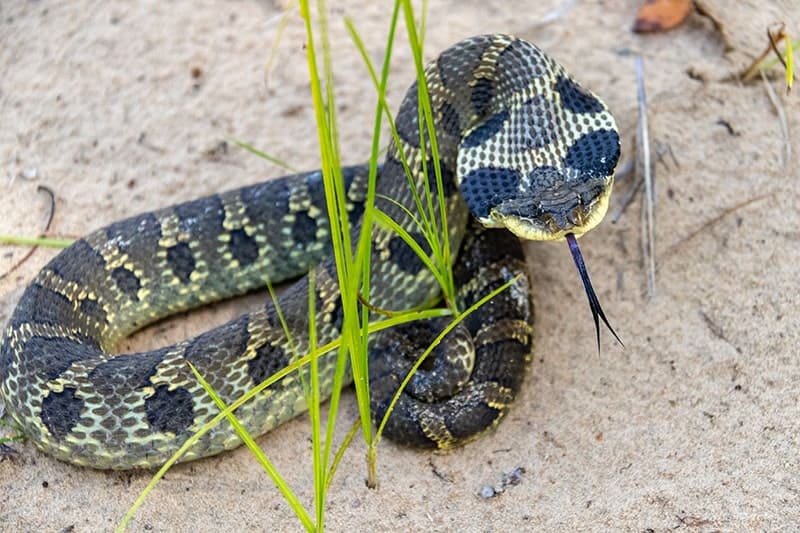
| Species: | H. platirhinos |
| Longevity: | 5–9 years |
| Good to own as a pet?: | Yes |
| Legal to own?: | Yes |
| Adult size: | 1.5–3.5 feet |
| Diet: | Carnivorous |
If you’ve spent time around online snake enthusiasts, then you’ve likely seen people referring to snakes as “drama noodles”, and the Eastern Hognose is the epitome of this. These snakes are known for playing dead in the most dramatic fashion by flipping themselves on their backs and gaping their mouth open when startled or threatened. They are nonvenomous and can be good pets.
The Eastern Hognose is carnivorous, and they eat all manner of small animals. This includes toads, which can inflate themselves full of air to make it more difficult to be eaten. However, the Hognose has teeth toward the back of the throat that allow it to deflate toads, which makes them easier to eat.
4. Black Rat Snake
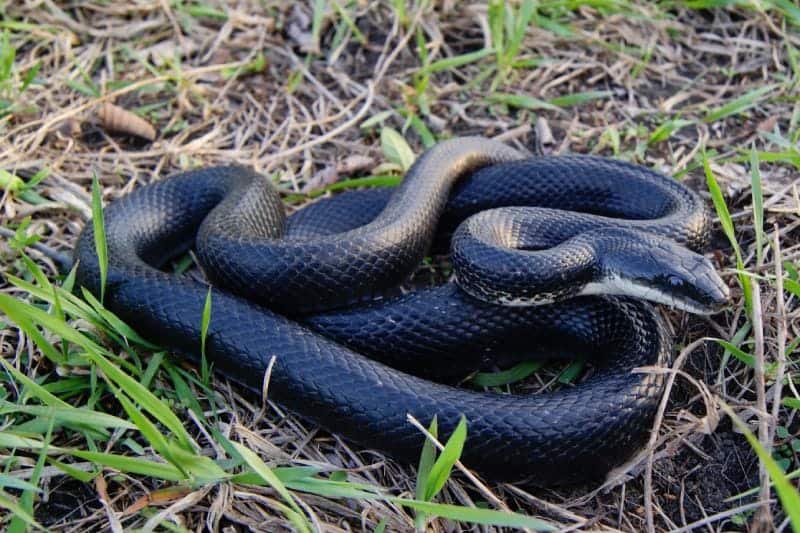
| Species: | P. obsoletus |
| Longevity: | 10–15 years |
| Good to own as a pet?: | Yes |
| Legal to own?: | Yes |
| Adult size: | 3.5–6 feet |
| Diet: | Carnivorous |
These large snakes are often assumed to be venomous simply due to their appearance, but they are nonvenomous snakes that are excellent at pest control. Some people consider them to be pests because they will get into chicken coops and eat the eggs, but they are great to have around for controlling rats and other pest animals. They are one of the more popular pet snakes, and while they do take time and patience to acclimate to routine handling, they are very docile and are hardy enough for beginners.
5. Speckled Kingsnake
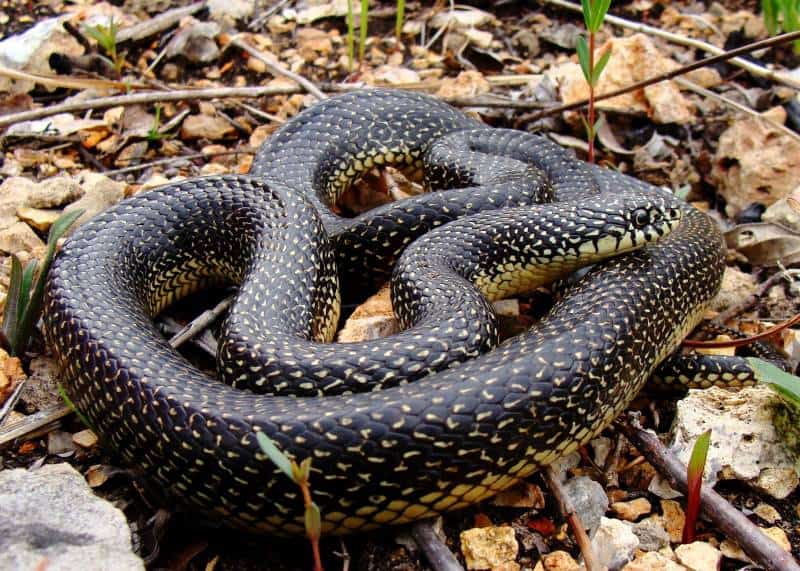
| Species: | L. holbrooki |
| Longevity: | 20 years |
| Good to own as a pet?: | Yes |
| Legal to own?: | Yes |
| Adult size: | 3–6 feet |
| Diet: | Carnivorous |
Another widely misunderstood, nonvenomous snake, the Speckled Kingsnake is a large, beautiful snake that is excellent for pest control. They are especially prized for consuming other snakes, including venomous snakes, although they rarely cannibalize other Speckled Kingsnakes. They are generally docile snakes that are popular as pets, but captive-bred snakes are usually more even-keeled than wild-caught. They enjoy foraging and enjoy “sniffing” out prey with their tongue.
6. Common Watersnake

| Species: | N. sipedon |
| Longevity: | 9–10 years |
| Good to own as a pet?: | Yes |
| Legal to own?: | Yes |
| Adult size: | 2–5 feet |
| Diet: | Carnivorous |
Although their aquatic habits often get them confused for Cottonmouths, the Common Watersnake is a nonvenomous water snake in Arkansas. They are mainly piscivorous, but will also eat toads, frogs, salamanders, and other aquatic animals they encounter opportunistically. Some people consider these snakes to be exceptional pets, although they do take time to get used to frequent handling, and they are known to be nippy during this process. They require an enclosure that is large relative to their body size, so they aren’t a great option for everyone.
7. DeKay’s Brownsnake
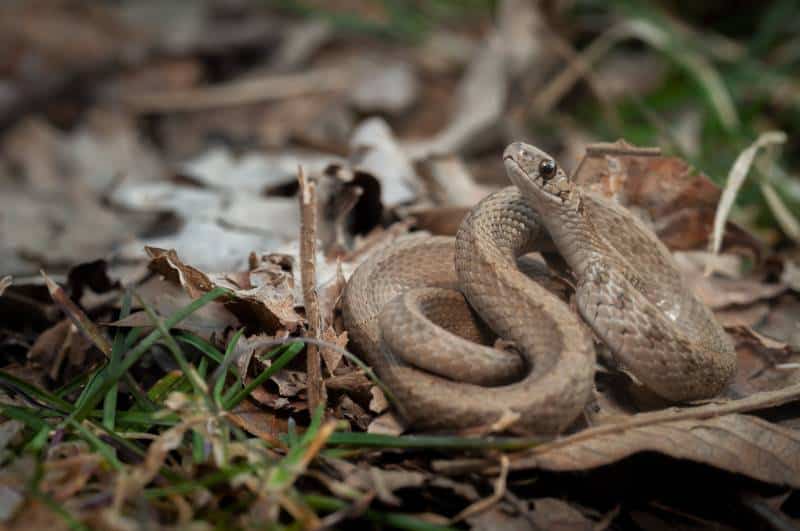
| Species: | S. dekayi |
| Longevity: | 9 years |
| Good to own as a pet?: | No |
| Legal to own?: | Yes |
| Adult size: | 9–15 inches |
| Diet: | Insectivorous |
The DeKay’s Brownsnake is a somewhat mysterious snake that is rarely seen. They are primarily nocturnal and tend to hide under objects. The majority of their diet consists of insects, like grubs and earthworms, and they have specialized teeth that allow them to remove snails’ bodies from their shells. They will opportunistically eat small animals they encounter under rocks and logs, though, like small salamanders. They do not typically do well in captivity and it’s not unusual for juveniles to die in captivity before reaching adulthood.
8. Rough Earth Snake
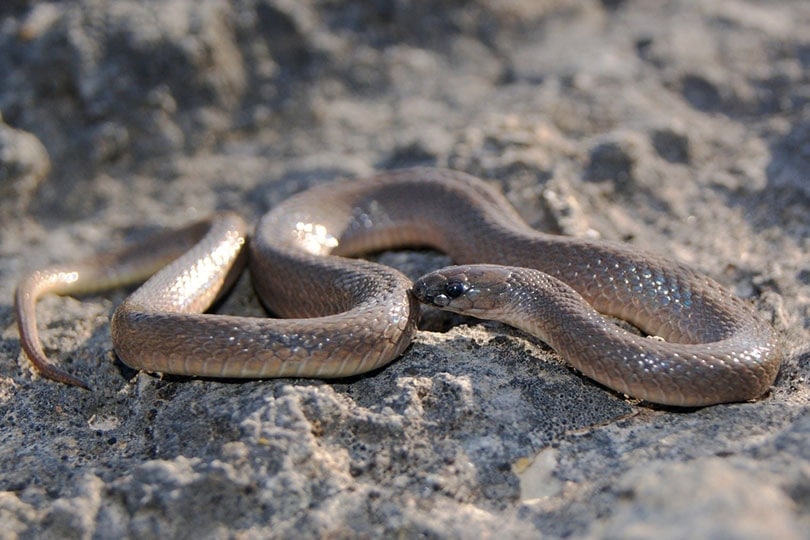
| Species: | H. striatula |
| Longevity: | 7 years |
| Good to own as a pet?: | No |
| Legal to own?: | Yes |
| Adult size: | 7–13 inches |
| Diet: | Carnivorous |
Like the DeKay’s Brownsnake, Rough Earth Snakes are secretive snakes that are rarely seen. They spend most of the time hiding under objects like logs in search of prey. They primarily eat insects and small animals, like frogs. They do not make good pets because they rarely thrive in captivity, although some people do keep them as pets.
9. Common Garter Snake
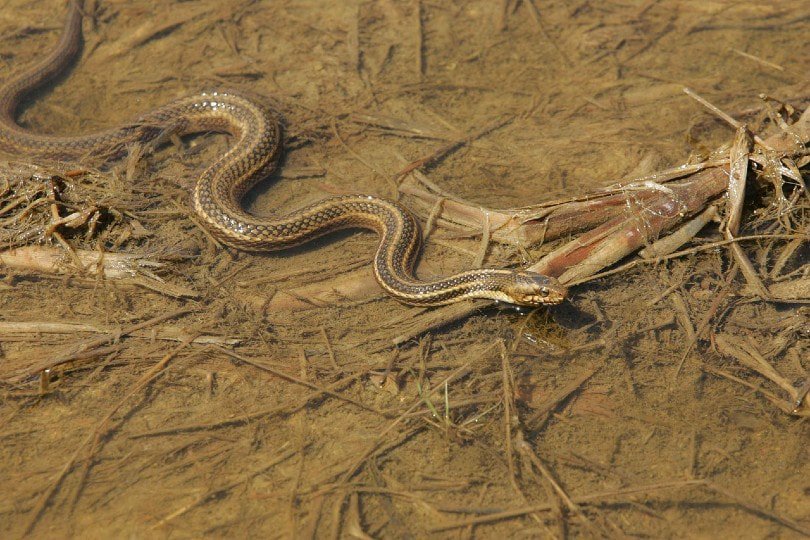
| Species: | T. sirtalis |
| Longevity: | 4–10 years |
| Good to own as a pet?: | Yes |
| Legal to own?: | Yes |
| Adult size: | 18–26 inches |
| Diet: | Carnivorous |
The Common Garter Snake is a docile snake that can make a great pet, although experts don’t recommend attempting to domesticate a wild-caught snake. They are usually active during the day, making them a more interesting pet than nocturnal snakes. They mainly eat small rodents, insects, reptiles, and amphibians. Interestingly, Red Wigglers are toxic to Common Garter Snakes, while Nightcrawlers are one of their favorite foods.
10. Pygmy Rattlesnake
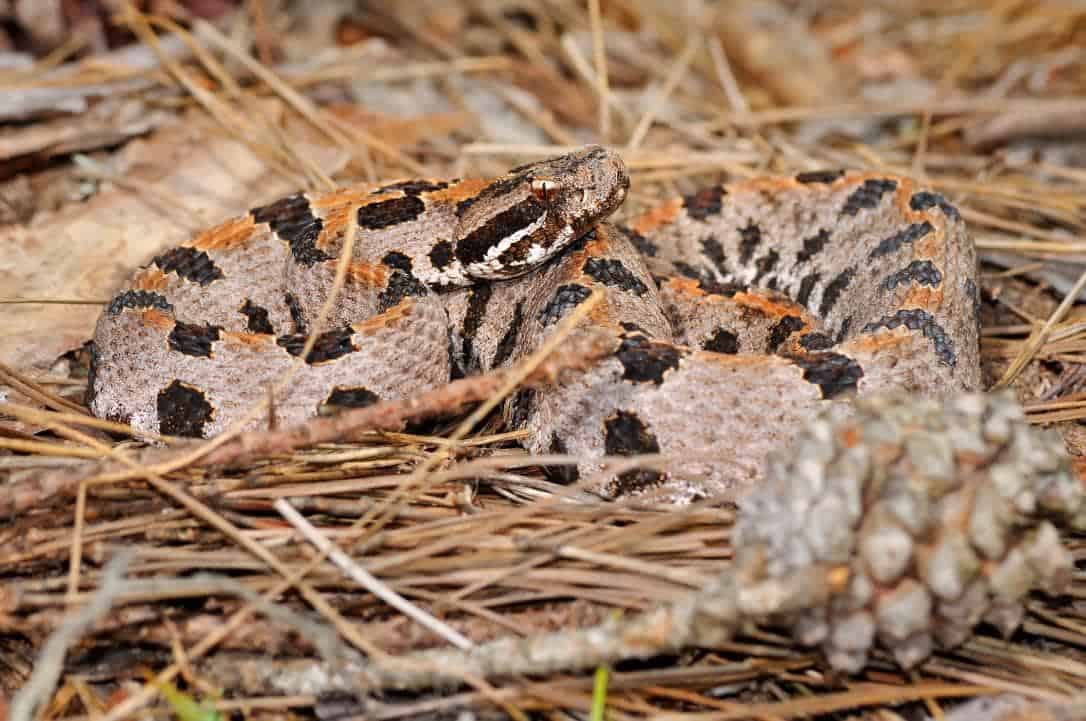
| Species: | S. miliarius |
| Longevity: | 20 years |
| Good to own as a pet?: | Yes |
| Legal to own?: | Yes |
| Adult size: | 12–24 inches |
| Diet: | Carnivorous |
The Pygmy Rattlesnake is a petite Rattlesnake that can be kept as a pet. They do well in captivity, and, with proper precautions, many people enjoy them. In the wild, they actively avoid people and while they are venomous, there are no recorded fatalities from a Pygmy Rattlesnake bite. They mainly eat insects, birds, reptiles, and small mammals.

Final Thoughts
Snakes in Arkansas are necessary to a healthy ecosystem. Helping people understand snakes can not only take away some of the fear that people have, but also help people understand the importance of protecting and supporting snake populations. Most snakes avoid people, so the next time you’re hiking in Arkansas and are surprised by a snake, be aware that it’s likely more surprised by your presence.
See Also:
- 28 Snakes Found in Missouri (With Pictures)
- 14 Turtles Found in Kentucky (With Pictures)
- 17 Turtles Found in Illinois (With Pictures)
Featured Image Credit: makasana photo, Shutterstock
